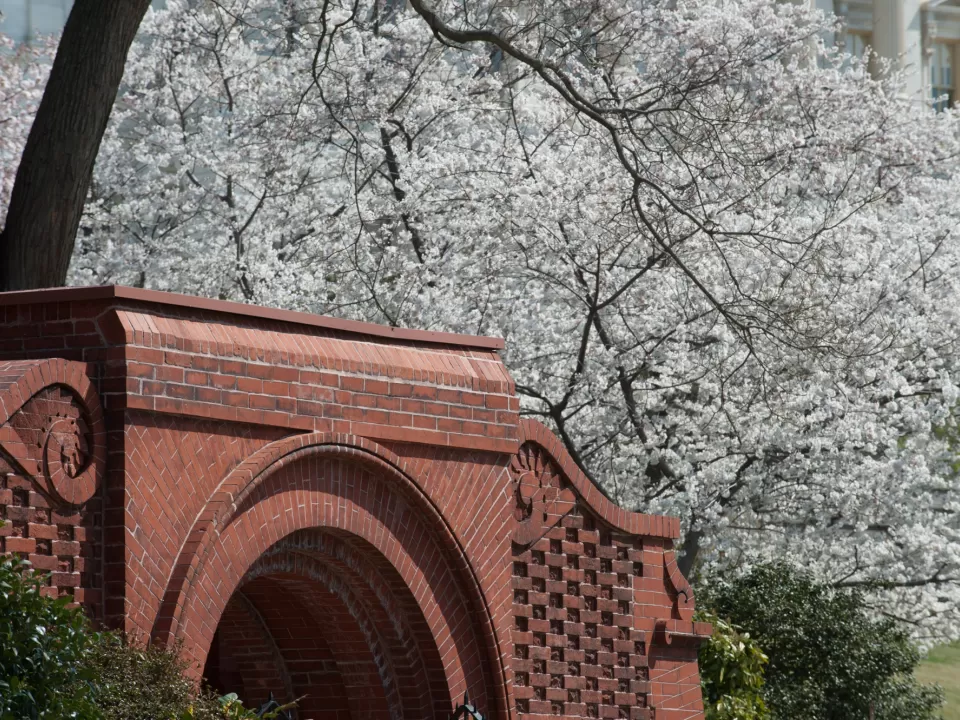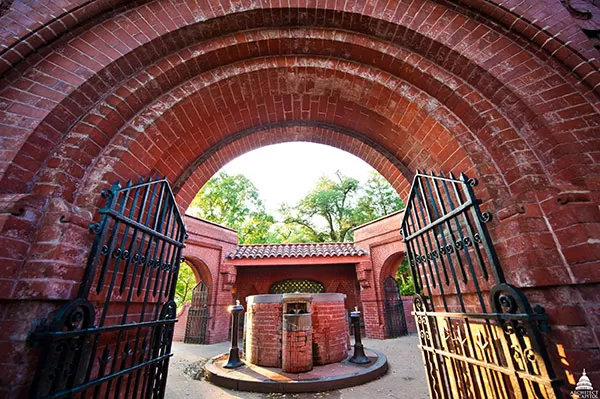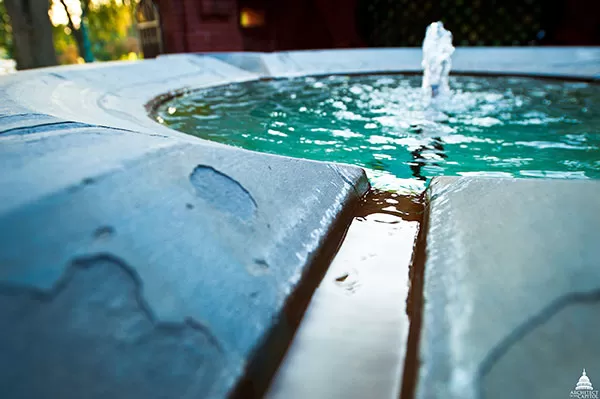
Image Gallery




U.S. Capitol Grounds
Construction on the Summerhouse began in 1879 and was completed in late 1880 or early 1881 by landscape architect Frederick Law Olmsted.
Frederick Law Olmsted was appointed by Congress in 1874 to develop and improve the Capitol Grounds, which had been enlarged in response to the addition of the north and south wings of the U.S. Capitol. He included the Summerhouse in response to complaints that visitors to the Capitol Building could not find water or a place to rest on their journey. In addition, he designed it as a setting for decorative vegetation.
The Summerhouse is constructed in the form of an open hexagon. The red brick used for its walls is laid in geometric and artistic patterns, forming volutes and other shapes, and taking on a "basket-weave" texture on the exterior walls on either side of each doorway. Some of the bricks have been carved or shaped to contribute to the design's overall effect. Arched doorways, each fitted with wrought-iron gates and flanked by small windows, occupy three of the building's six walls.
Inside, stone benches with armrests alternate with the doorways and provide seating for 22 people; the benches are shaded and sheltered by projecting roofs of red Spanish mission tile. Above each bench is a large oval window flanked by decorative niches, each niche with a different design of intertwined scrollwork. Two of the three windows are filled by thick stone panels with octagonal perforations; the third, ornamented with a wrought-iron grille, affords a view into a small grotto, where a stream of water falls and splashes over the rocks. Each doorway offers a different view as well, one facing a tall hedge, one looking up at the Capitol, and one looking across the Capitol's west lawn toward the Mall.
The fountain in the center of the building originally provided drinking water piped from a spring. The six small metal fittings around the fountain's upper perimeter secured chains that are believed to have held drinking cups or ladles. Three individual drinking fountains connected to the filtered city water supply now provide drinking water, and the central fountain is used only for display.
The water supply for the grotto was originally provided by a runoff stream from a drinking fountain at the Capitol's west entrance. Later, a city-water stream was made to flow over the rocks.
Olmsted was concerned that the Summerhouse not intrude upon the Capitol's landscape, but he was also careful to ensure that it was sufficiently public to prevent its use for improper purposes. Several of his letters show his active interest in the progress of the building and its landscaping. Most of these were written to F.H. Cobb, the engineer in charge of the Capitol Grounds. They range in content from Olmsted's attempts to secure the construction drawings from the draftsman, to his desire that progress be accelerated, to his instructions about mulching the shrubbery.
The letters also indicate areas in which the completed structure differed from his plans. For example, Olmsted intended that the overflow from the. Summerhouse's fountain should operate a small device called the "carillon" to produce soft musical chimes; however, the device could not be made to work properly and so was never installed.
Olmsted originally planned two Summerhouses for the Capitol Grounds (references in two of his letters identify a northern and a southern Summerhouse); however, congressional objections to the northern Summerhouse before its completion prevented the construction of the southern one.





U.S. Capitol Grounds